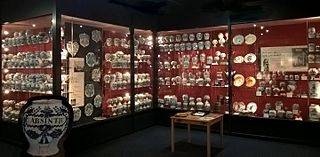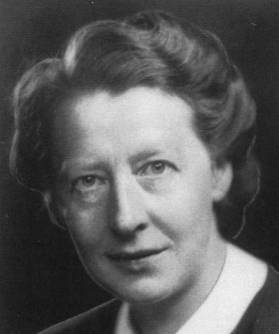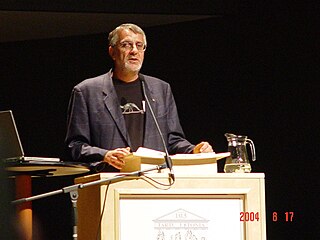Related Research Articles

Withington is a suburb of Manchester, Greater Manchester, England. Historically part of Lancashire, it lies 4 miles (6.4 km) from Manchester city centre, about 0.4 miles (0.6 km) south of Fallowfield, 0.5 miles (0.8 km) north-east of Didsbury and also 1 mile (1.6 km) east of Chorlton-cum-Hardy. Withington has a population of just over 14,000 people, reducing at the 2011 census to 13,422.

Manchester Royal Infirmary (MRI) is a large NHS teaching hospital in Chorlton-on-Medlock, Manchester, England. Founded by Charles White in 1752 as part of the voluntary hospital movement of the 18th century, it is now a major regional and national medical centre. It is the largest hospital within Manchester University NHS Foundation Trust, and based on its Oxford Road Campus in South Manchester where it shares a site with the Royal Manchester Children's Hospital, Manchester Royal Eye Hospital and Saint Mary's Hospital as well as several other educational and research facilities. The Hospital is also a key site for medical educational within Manchester, serving as a main teaching hospital for School of Medical Sciences, University of Manchester.
The Christie NHS Foundation Trust in Withington, Manchester, manages the Christie Hospital, one of the largest cancer treatment centres of its type in Europe. The Christie became an NHS Foundation Trust in 2007 and is also an international leader in cancer research and development, home to the Paterson Institute for Cancer Research.
Allen Charles Skorepa was an American lichenologist, and a specialist on the lichens of Maryland.

The New Year Honours 2000 for the United Kingdom and New Zealand were announced on 31 December 1999, to celebrate the year passed and mark the beginning of 2000. The Honours list is a list of people who have been awarded one of the various orders, decorations, and medals of the United Kingdom. Honours are split into classes ("orders") and are graded to distinguish different degrees of achievement or service, most medals are not graded. The awards are presented to the recipient in one of several investiture ceremonies at Buckingham Palace throughout the year by the Sovereign or her designated representative. The Prince of Wales and The Princess Royal deputised for The Queen.

The Lancashire County Rugby Football Union is the society responsible for rugby union in the county of Lancashire, England, and is one of the constituent bodies of the national Rugby Football Union having been formed in 1881. In addition it is the county that has won the County Championship on most occasions
Carroll William Dodge was an American mycologist and lichenologist. His major fields of study included human and mammalian parasitic fungi, lichen-associated fungi, and fungi forming subterranean sporophores.
Mason Ellsworth Hale, Jr. was one of the most prolific American lichenologists of the 20th century. Many of his scholarly articles focused on the taxonomy of the family Parmeliaceae. Hale was one of the first lichen experts to incorporate secondary chemistry and technology such as computers and scanning electron microscopy into taxonomic work. Mason Hale published approximately two hundred articles and books on various aspects of lichen biology including taxonomy, anatomy, chemistry, and ecology. Hale also wrote several books aimed at education and increasing accessibility to lichens.

Caroline Dive is a British cancer research scientist. Dive is Professor of Cancer Pharmacology at the University of Manchester, Deputy Director of the Cancer Research UK (CRUK) Manchester Institute, Director of the CRUK Manchester Institute Cancer Biomarker Centre and co-director of the CRUK Lung Cancer Centre of Excellence. She is the current President of The European Association for Cancer Research (EACR).

John Frederick "Wilkie" Wilkinson was a chemist, physician, and pioneering haematologist. He was among the first physicians to experiment with chemotherapy for leukaemia.

Edith Isabel Paterson born Edith Isabel Myfanwy Jones was a Scottish radiobiologist. She developed techniques for treating children with brain tumours. She pioneered cancer research and in 1967 the Paterson Institute for Cancer Research in Manchester was named to recognise her and her husband's contribution.
Peter Wilfred James (1930–2014) was an English botanist and lichenologist. He was a pioneer in the study of lichens as environmental indicators, especially of atmospheric pollution.

David John Galloway, FRSNZ was a biochemist, botanist, and lichenologist.
Thomas Hawkes Nash III is an American lichenologist. His research is about the biology and ecology of lichens, and the effects of air pollution on plants and lichens. He is known as an authority on the family Parmeliaceae. During his long career at the Arizona State University, he helped develop the lichen herbarium into a world-class collection with over 100,000 specimens representing more than 5000 species. In 2010, the year of his retirement, he was awarded the Acharius Medal for lifetime achievements in lichenology, and the following year had a Festschrift published in his honor.
Brian John Coppins is a botanist and lichenologist, considered a world authority on crustose lichens and a leading expert on the genus Micarea.
Charles Tallent Tallent-Bateman was a British solicitor, poet, bibliophile, antiquary and campaigner for public rights of way and founder and Chairman of the Peak District and Northern Counties' Footpaths Preservation Society.

Philippe Clerc is a Swiss lichenologist. A Festschrift was dedicated to him in 2020, on the occasion of his retirement from the Conservatory and Botanical Garden of the City of Geneva, where he worked from 1993 to 2020. Clerc is an authority on the beard lichens, and has had nearly 100 publications on this and other topics, such as the lichen flora of Switzerland.

Pier Luigi Nimis is a senior professor of botany at the University of Trieste in Italy. He specialises in lichenology and phytogeography, including the uses of lichens as indicators of pollution and devising methods for web-based identification keys.
Oliver Gilbert was an urban ecologist and lichenologist. He was a reader in landscape ecology at Sheffield University. He was one of the early users of lichens as indicators of air pollution, and also studied the ecology and diversity of wildlife in urban areas.
References
- 1 2 Gilbert, Oliver (2000). "A tribute to Brian William Fox". The Lichenologist. 32 (2): 103–104. doi:10.1006/lich.1999.0263. S2CID 85569556.
- 1 2 "Christie Hospital Collection". JISC Archives. Retrieved 11 January 2024.
- ↑ "Brian William Fox". Herbariaunited. Retrieved 11 January 2024.
- ↑ Savidge, J. P.; Heywood, V. H.; Gordon, Vera (1963). Travis's Flora of South Lancashire. Liverpool Botanical Society. p. 400.
- ↑ Gilbert, O.; Fox, B.; Purvis, O. W. (1982). "The Lichen Flora of a High-Level Limestone-Epidiorite Outcrop in the Ben Alder Range, Scotland". The Lichenologist. 14 (2): 165–174. doi:10.1017/S0024282982000309. S2CID 86779678.
- ↑ "Woodside: Lichens". Derbyshire Wildlife Trust. Retrieved 11 January 2024.
- ↑ Fox, Brian (1999). "The influence of atmospheric pollution on the lichen flora of Cheshire". In Greenwood, E.F. (ed.). In Ecology and Landscape Development: A History of the Mersey Basin. Liverpool University Press and National Museums & Galleries on Merseyside. pp. 185–193.
- ↑ "Brian William Fox, 1929-1999". JISC Archives. Retrieved 11 January 2024.